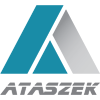Composites and laminates adhesives
What is composite and laminate? Very briefly - composites are a general category of materials consisting of two or more materials in combination, which produces a third material with different properties. A composite is e.g. a dibond board (alu+ plastic+ alu, separately weak materials due to thickness, and together definitely stronger), but also epoxy resin mixed with glass fiber, which belong to the narrow sub-category of laminates. If we already have it explained below, you will find information on how and where we select individual adhesives and the most common applications. Non-scientific division that we use is: dibond boards with names e.g. alucobond (proprietary name) used in advertising and building facades - the main problem is the so-called getting caught in the glued places and most of the non-reactive products cannot cope with it. We have the solution and currently the best version is GB 10-10 or 10-05 or after ATK 812+ P200 tested previously. It should be remembered that we are basically joining powder coated surfaces and not aluminum, because they are two different materials! and therefore most hold too weakly. colloquially called glass or carbon fiber composites - carbon or less often nylon - kevlar (most often in the form of fabrics of different thickness and weave) based on epoxy resins, polyester, less often polyurethanes. They appear under the names of production processes such as FRP, CFRP, GFRP, AFRP, textolite and DPCD / P-DPCD.When joining, we mainly use the strongest adhesives available on the market, that is: Acralock SA 1-15, SA 10-15 and for joints with high dynamics such as gluing reinforcements in boats, sailboats and yachts SA 10-70. Materials glued to each other and to metals such as ordinary steel, aluminum and even stainless steel. We also use these varieties for the repair and production of fiber tanks, pontoon structures and a laminate layer - with particular emphasis on the special version of the SA 10-15 WHT perfectly white adhesive for laminate boards in car bodies - refrigerated vehicles, etc. Glues immediately, seals and creates an aesthetic external joint . Finally, 3 two-component resin adhesives should be mentioned, i.e. ATK EP61, Kemispox N and ATK EP 351. Due to their pourable consistency, we choose the places where the element will be pressed with a small gap on the sides, or even poured into the center. The first one is a dense version with a long time of 60 minutes for application and use when combining composite+ metal / steel). In places that are stiff and unbendable. the last category are HPL laminates, i.e. a combination of laminate+ wood, mdf, chipboard - it is strictly a construction material. Here you can choose between two products: a perfectly smooth and adherent surface, we choose U-800 or if we want to additionally level it, use ATK PU 021. Take a look at the wood glues category. Gluing resin with glass fiber - is it a good idea? If we are talking about manual laminating with resin and filtering the glass fiber and strengthening an element with this method by recreating the missing piece, then yes; but if you want to stick the reinforcement, brackets, e.g. wooden ones used in smaller boats and sailboats, don't - choose SA 10-15 or EP61 will be much faster, stronger and healthier. Differences between laminates and their structure - a brief overview. Most often we have two materials: resin+ reinforcement. The two most common resins are either polyester or epoxy based. The former is weaker, but cheaper; the second is stronger but more expensive. The reinforcement is made of glass fiber in the form of mats of various thickness, scrap-threads and also powder. We use this filling in the above two composites. Carbon fiber, or carbon, is basically only used with epoxies. Kevlar mats or natural wood, bamboo, jute, etc. fibers, which are slowly entering into the application, are also used less frequently, which also gives a nice decorative effect. Where do we use composites? Due to the weight reduction compared to steel and even aluminum. The elimination of rusting and the possibility of building shapes previously unavailable. An additional factor is the reduction of costs, especially in low-serial and even single-unit elements. Examples of application: pipes, channels and other culverts - composite bars reinforcing structures also in combination with steel or aluminum car plating, such as roofs, side panels, bumpers, fairings, camper walls, etc. yacht and boat construction basically made entirely of various types of composites with sandwich elements of stiffening foams, providing uniform, foamed or honeycomb buoyancy. industrial vehicles of railways, heavy transport, forklift doors, aviation from wings to hulls and many other applications.










